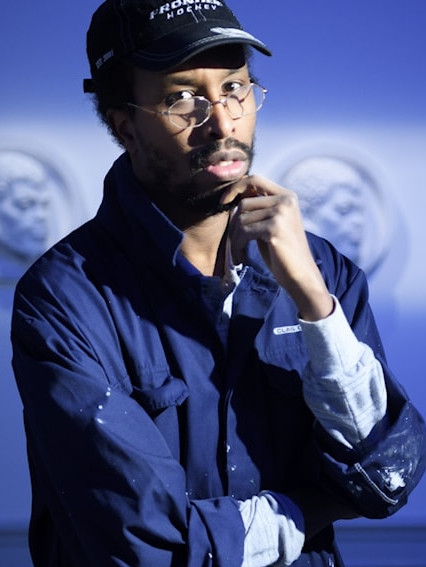The life of a black slave boy who was taken from the West Indies to Sweden in the middle of the 18th century and who spent most of his life at the court where king Gustavus III grew up and later reigned, is the starting point for this film. Coschi kept a diary and he is also mentioned in memoirs and letters from the time. Famous artists painted his portrait, but then as “Badin”, his given name which means “jester”. Made upon graduating from The Royal Institute of Art, which was founded as the Royal Academy of Art by Gustavus III in 1773, in the film contains fragments from the diary read by the artist himself, images from royal parks with sculptures of black fishermen and the ruins of a royal palace that was never completed. The current building of the academy, a make shift studio and the back of a black man with sarons with traditional Somali patterns are also featured.
The film is atmospheric, mixing dramatic music and a specially written opera aria performed by a black woman: “Here I am. I am Ur-Assynja, The future is welcoming me. And I am arriving, I am arriving.” The title Vanus Labor (Vanity’s Labor) comes from the court painter David Klöcker Ehrenstrahl’s work from around 1700 depicting a group of white children washing a black child, two of whom became future rulers of Sweden, Charles XII and Ulrika Eleonora the younger. Do the children want the dark baby to be like them?
Or is the washing a sign of care and reverence? In a silent part of the film, black people move slowly in a historical museum, watching the paintings on the walls which are only showing white people. One of the paintings at the museum is Vanus Labor. The museum is located in Gävle, the hometown of the artist, and the visitors are members of his family as well as friends.
Rent this work for public screenings

